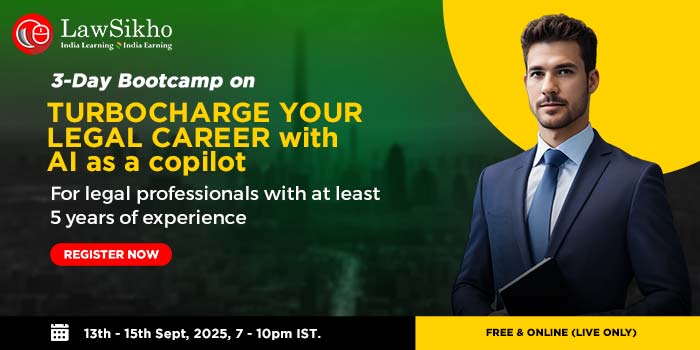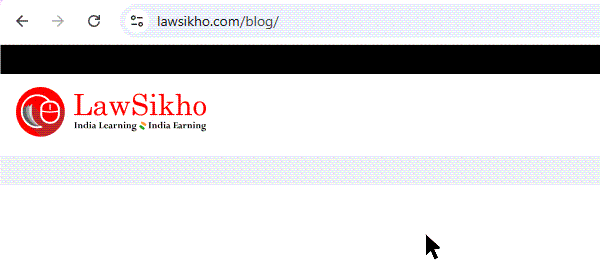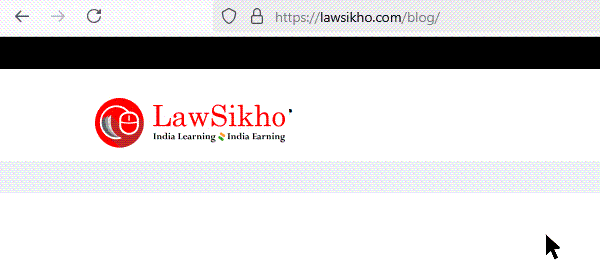Intellectual Property (IP) is no longer a mere legal safeguard; it is a business asset that, when properly managed, can generate significant commercial value. This article offers a comprehensive guide on how you can commercialise and monetise your IPR assets effectively.
Table of Contents
Introduction
“Maya, can I ask you something strange?” Prakash said, stirring his coffee slowly.
“Always,” Maya replied, looking up from her laptop.
“So, I actually have been using AI to generate images to make designs for my T-shirt business. The results are brilliant, I am so happy with the ideas and overall results. But then it hit me, can I even use these images? You know, commercially? Who owns them? Is it me or the AI? Or the people who made the AI? What if someone sues me later?” Prakash’s voice was half anxious, half curious.
Maya laughed. “I have wondered the same thing! I used AI to help me write product descriptions for my jewellery website last month. But can I really claim the text as mine? Does the AI tool have rights over it? Or the company that built the AI? And when does it officially become ‘my content’ that I can use however I want without worrying about some hidden rule in fine print?”
You may be thinking the same, especially if you have ever used ChatGPT, Midjourney, Claude or any other AI tool to generate text, images, music, code, or videos for your business.
Let me tell you something important straight away: the law around AI-generated content is still developing. There are no simple, final answers yet. But what you can and cannot do with AI-generated content depends heavily on two things:
- What the AI tool’s terms of use say, and
- Whether the output is protected by copyright or not under the laws of your country.
And this is where it gets interesting and confusing. Because in most countries, including India, the law says that only a human being can hold copyright, not a machine. So if an AI tool produces content entirely on its own without meaningful human involvement, it may not be protected by copyright at all.
But hang on, does that mean you can freely use such content, because no one owns it? Or does the company behind the AI tool still have some control?
This is exactly the grey area that Maya and Prakash stumbled upon. And it is what we are going to explore in this article.
By the end of this guide, you will have clear answers to questions as whether you can legally use AI-generated content for commercial purposes. When does AI-generated content become truly ‘yours’?
Also, what are the risks if you use AI content without checking the license? And how do you properly license AI-generated content for business use?
So let us follow Maya and Prakash as they try to find these answers for their small but growing businesses. You might see yourself in their doubts, and by the end, you will know exactly what you should do.
Understanding AI-generated content
They met again a few days later, this time at Maya’s home studio. She had been sketching jewellery designs on her tablet, but the browser tabs on her screen showed something else entirely: articles on copyright law, AI platforms, and licensing.
Prakash walked in holding a paper bag. “Before we dive into any law talk, I brought cinnamon rolls.”
“You are officially forgiven for that time you said Canva designs were better than mine,” Maya said, laughing.
“So, tell me,” Prakash said, leaning over the screen, “what did you find out about this AI business? Who actually owns the stuff it creates?”
Maya nodded. “That is the question, is it not? So I dug in. First, we have to understand what AI-generated content actually is. It is not just random stuff created by robots. It is output generated by machines, text, images, music, code based on data they were trained on and prompts that users like you and I provide.”
“Right, like when I type ‘sunset over mountains in watercolour’ and Midjourney gives me a beautiful image in seconds,” Prakash said.
“Exactly,” Maya replied. “Now here is where it gets tricky. In most places, including India, copyright law says that only a human being can be the ‘author’ of a work. If there is no significant human involvement in creating the content, it might not be eligible for copyright at all.”
“So wait,” Prakash said, frowning, “if no one owns the copyright, can I just use it freely? Like a public domain image?”
“That is one possibility,” Maya said, “but not always. Even if the content itself is not protected by copyright, the company behind the AI tool may have rules in their terms of use. For example, some tools allow full commercial use, some allow it only if you have a paid subscription, and some do not allow it at all.”
She further added, “But those terms of service govern usage rights contractually, but do not override statutory copyright laws. If content is not copyrightable (e.g., purely AI-generated), the platform’s terms may still impose restrictions, but these are contractual, not copyright-based, and their enforceability depends on jurisdiction”
“That sounds… inconsistent.”
“It is,” Maya said. “Here is a quick example. OpenAI’s terms say that if you are using their tools like ChatGPT through a paid account, then you own the output and can use it commercially. But if you are using it for free, they may have more restrictions. Adobe Firefly, on the other hand, is designed to give commercially safe outputs because it trains its models on licensed content. But even then, you still have to agree to their specific usage rights.”
Prakash raised an eyebrow. “So you are telling me the AI content I generate might be mine, or it might not be, depending on the platform’s fine print?”
“Exactly. That is why I said you need to check the terms of service every time. And not just glance over them, actually read the sections about ownership and commercial use. Some platforms might even retain rights to reuse or reproduce your outputs.”
“That sounds like a minefield,” Prakash said. “How do I know if the output is original or if it might be copying something from its training data?”
“That is a major debate going on right now,” Maya said. “Some artists have claimed that AI tools are copying their work because they were trained on publicly available content, sometimes without consent. That is why there is talk of stricter rules coming in. But for now, unless you are using the AI to recreate something too close to a known copyrighted work, you should be safe.”
Prakash leaned back. “Alright. So AI-generated content is… a bit like a wild animal. Looks beautiful, seems tame, but if you do not know how it works, it might bite.”
“Perfectly said,” Maya laughed. “And that is why the next step is learning how to handle it properly, how to license it if you are planning to use it for business.”
Legal framework governing AI content licensing
Prakash took another cinnamon roll, looking thoughtful. “So it is down to platform terms. But what about the law? Is there anything in Indian law or anywhere else that says what I can or cannot do with AI-generated stuff?”
Maya smiled. “I knew you would ask that. So I checked. The legal framework is, honestly, still catching up with this AI wave. But here is what I found.”
She picked up her tablet and scrolled to her notes.
“First India. Our Copyright Act, 1957, does not mention AI at all. In fact, no country has fully adapted its copyright laws to cover AI yet. Under Indian law, a ‘work’ must have a human author. So if an AI creates something entirely by itself, that content may not even qualify for copyright protection. No human author, no copyright. Simple as that.”
“So that means I can just use any AI content freely in India?” Prakash asked.
“Not quite. Because the platform’s terms of service might still control what you can do. If Midjourney or OpenAI says you do not have full rights, then their rules apply even in India. Plus, there is the IT Act, 2000, and some general contract law principles that could affect your use of such content. So you cannot skip reading the fine print.”
Prakash sighed. “This is harder than I thought.”
“Wait, it gets more interesting when you look outside India,” Maya continued. “In the United States, the Copyright Office has already made its position clear. In a recent case, they refused to grant copyright to an artwork made entirely by AI, because there was no human author. But if you, as a human, make meaningful creative choices like editing, arranging, or modifying the AI output, then you can claim copyright over that part.”
“So I need to add my own creative touch to make it properly mine?”
“Exactly. You cannot just press ‘generate’ and claim full ownership. But if you use the AI as a tool, like you would use Photoshop or a camera, then your input matters.”
“And what about Europe?”
Maya scrolled further. “The European Union has introduced the AI Act, which focuses on transparency. It says that AI-generated content must be clearly labelled as such in some cases, especially when it might deceive people. But they are still debating about copyright. No country yet has a law that says ‘AI owns its own work.’ So for now, in the EU too, a human must be involved to get copyright protection.”
“So, let me get this straight,” Prakash said, counting on his fingers. “In India, AI content probably has no copyright, unless a human contributes something creative. In the US, the same rule applies, but they have officially said so. In Europe, they want transparency, but still no clear AI copyright. And everywhere, I still have to obey the AI platform’s terms of use.”
Maya grinned. “See? You are learning fast.”
He grinned back. “And here I thought my biggest problem was choosing T-shirt colours.”
“Well, you will have a bigger problem if someone claims you misused an AI design and sends you a legal notice,” Maya said. “Which is why you need to know how to license AI content properly. That is the next thing I checked.”
Key considerations when licensing AI-generated content
“Alright, genius,” Prakash said, pulling out his notebook. “I have understood the law is unclear, the platforms have rules, and no one really knows who owns pure AI content yet. But say I want to use an AI-generated design for my T-shirts. What exactly should I be careful about before I put that design on sale?”
Maya grinned. “I knew you would ask that, too. There are five key things you have to check every single time you want to use AI-generated content commercially.”
She held up her hand, counting on her fingers.
- “First: Ownership rights. You have to check who owns the output. Like I told you, if you use OpenAI or Midjourney with a paid subscription, most of the time you get full ownership. But free versions? Not so simple. Some platforms keep certain rights. And some do not give you any ownership at all, just a limited right to use.”
“So I must read the terms carefully to see if the output is really mine?”
- “Exactly,” Maya said. “Second: Usage rights. Even if you own the output, you must see what you are allowed to do with it. Can you sell it? Use it in advertisements? Print it on a million mugs? Some AI platforms allow this for paid users, but limit free users to personal use only. You do not want to get into trouble for breaking those terms.”
Prakash scribbled furiously in his notebook. “Third?”
- “Indemnity and liability. This is where most people miss a big danger. If the AI creates content that accidentally copies someone’s copyrighted work, like an artist’s style or a famous logo, you could be the one sued, not the AI company. Some platforms give you indemnity protection if you are a paid user. Some do not protect you at all. So check if you are covered or if you are on your own.”
“That sounds terrifying. I could get sued for something the AI did?”
- “Sadly, yes. Fourth: Modifications and derivative works. If you plan to tweak the AI-generated content, change the colours, combine it with other images, or edit the text, you need to check if the licence allows that. Some AI tools restrict how much you can alter the output. Others give you full freedom.”
“Even editing can be limited? But it is my design!”
“Not always, Prakash. It depends on the licence. And then there’s the issue of moral rights. These are especially strong in Europe, things like the right to be credited or to object to modifications that harm your reputation. AI complicates this. While AI-generated content usually isn’t protected by moral rights, if a human significantly contributes to the creative process, like shaping the final output, and the law recognises it, attribution might still be required”
Prakash groaned. “So many things to check for a simple design.”
Maya smiled. “Better safe than sued. Trust me, a ten-minute check now can save you from months of trouble later.”
“So what do I actually do when I want to license AI-generated content properly? Is there a step-by-step way to get this right?”
Maya nodded. “Yes. And that is exactly what I will show you next.”
Practical guide: How to license AI-generated content for your business
“Alright, Maya,” Prakash said, setting his notebook down. “I am ready. Give me the simple, no-nonsense version. What exactly do I need to do before I use an AI-generated design for my T-shirts or any other AI content for business?”
Maya laughed. “Simple, he says. But fine, I will give you a clear five-step guide. Just follow these every time you create AI content for commercial use. No lawyer needed, at least not yet.”
She flipped her tablet around and showed him her notes.
Step 1: Check the AI platform’s terms of use.
“Start here. Every tool, whether it is ChatGPT, Midjourney, Adobe Firefly, or something else, has a terms of service page. Go to the sections on ‘Ownership’, ‘Licence’ and ‘Commercial Use’.
For example, for OpenAI, if you are a paid user, then you own the output and can use it commercially. For Midjourney, too, you get full rights if you are a paid user, but they may still keep a license to use your work in their showcase gallery.
Adobe Firefly outputs are designed for commercial safety, but only if you use them under their proper license.
If you are on a free plan, check for any restrictions. Most free versions are limited to personal or non-commercial use.”
Prakash nodded. “Got it. Always read the fine print, even if it is boring.”
Step 2: Decide your purpose clearly.
“Ask yourself: What am I going to do with the AI content? Sell it on T-shirts? Use it in a YouTube ad? Modify it into something else?
Your purpose matters because some licences allow resale and modification, while others do not. You cannot assume all commercial uses are covered.”
Prakash scribbled: “Purpose matters.”
Step 3: Choose the right licensing model if needed.
“Some platforms, especially stock image and music AI tools, may offer different license types. AI platforms typically use custom licensing models (e.g., subscription-based usage rights) rather than traditional stock media terms like royalty-free or rights-managed.
Then, there is rights-managed. Pay depending on how, where and for how long you use it. There is also exclusive or non-exclusive. So, can you be the only user of this AI output, or can others buy the same thing too?
If you get these options, pick what matches your business plan. Exclusive licences cost more but might make sense if you want a totally unique brand image.”
Prakash raised an eyebrow. “T-shirt business probably needs non-exclusive, right?”
“Most likely. But if you want to build a premium brand someday, exclusive could be worth it.”
Step 4: Keep records.
“Always save proof of the AI tool and version you used, the terms of service at the time and the exact prompt you gave.
Also, keep a note on the output you received and the date you created the content.
This way, if someone claims you copied their work or if the AI company changes its rules later, you can show what you did and when.”
“Evidence,” Prakash said, “like for tax returns.”
“Exactly like that,” Maya smiled.
Step 5: Monitor for changes.
“AI platform terms can change without warning. What is free today might require payment tomorrow. Subscribe to platform updates or check their legal page every few months, especially before launching a product based on AI content.”
Prakash sighed. “So I need to become part designer, part lawyer, part detective.”
Maya grinned. “Welcome to the future, my friend. But honestly, it sounds worse than it is. Once you do this a few times, it becomes easy. And it saves you from costly mistakes.”
“Alright,” Prakash said. “Next time I make an AI design for my T-shirts, I will follow these five steps like gospel. You might have saved me from disaster.”
“That is why I get first dibs on your new designs,” Maya said, smiling.
Examples and case studies
Prakash leaned forward, curious. “Alright, clever Maya. All this theory is good. But has anyone actually landed in trouble or done this right with AI content? Give me real examples.”
Maya smiled. “I thought you would ask. So here are some cases that show what can happen, good and bad, when people use AI-generated content without thinking it through.”
The stock image mess – Example 1
“Now, imagine a small online store in the United States that once used AI-generated stock images for its website banners. They assumed that because the tool was ‘free to use’, the images were free for business use too. But when a photographer recognised her style in one of the AI outputs and sued the AI company, the store got dragged into the dispute as well. Why? Because they could not prove they had permission to use the content commercially.
What is the lesson here? Always check the AI tool’s licence, even for free tools and save proof of permission.”
Prakash winced. “Imagine getting sued for a website picture. Ouch.”
Adobe Firefly’s smart move – Example 2
“Now let us talk about something real. Adobe designed Firefly differently. They trained it only on licensed or public domain images so users would not get into copyright fights later. Their terms clearly allow paid users to create and sell commercial works with confidence. One designer used Firefly outputs to make posters for an international festival, completely safe, with no legal problems.
What we learn here is to pick tools that give you clear, commercially safe licences. It is worth the money.”
“Sounds like the Adobe user slept well at night,” Prakash said.
The New York Times v. OpenAI and Microsoft (U.S.) – Example 3
Prakash leaned in again, intrigued. “Okay, Maya, you gave some great examples earlier, but what about the big leagues? Any high-profile AI legal battles going on?”
Maya nodded. “Oh, absolutely. The most talked-about one right now is The New York Times v. OpenAI and Microsoft, a real heavyweight copyright fight.”
Prakash raised an eyebrow. “Wait, the New York Times is suing OpenAI?”
“Yep,” Maya replied. “It all started in December 2023. The Times sued both OpenAI and Microsoft in federal court in New York. They claimed that millions of their articles were used without permission to train AI models like ChatGPT and Copilot.”
Prakash frowned. “But aren’t those just training materials? Why is that a problem?”
Maya explained, “Well, the Times argues that the AI tools sometimes spit out their articles verbatim or very close to the original. They say it’s like a ‘market substitute’ — people get the info without visiting the Times website, which means lost readers and lost revenue.”
Prakash whistled softly. “That’s serious. So what’s happened in court?”
“Quite a bit,” Maya said. “In March 2025, the judge, Sidney Stein, allowed most of the big claims to move forward. The court agreed that the Times had shown enough examples of content being copied to justify a trial.”
“Did anything get dismissed?” Prakash asked.
“Yes,” Maya replied. “Some claims, like ‘hot news’ misappropriation and parts of the DMCA claims, were tossed out. But the copyright and trademark-related claims are very much alive.”
Prakash looked thoughtful. “What about the older AI models like GPT-2 and GPT-3? Don’t those go back a few years?”
“Funny you ask,” Maya said, “OpenAI tried to argue that those claims were too old, outside the Copyright Act’s three-year limit. But in April 2025, the judge disagreed. He said the Times wasn’t expected to know about the infringement as early as 2019. So now even older model-related claims are allowed in.”
Prakash chuckled. “So OpenAI can’t just say, ‘Oops, too late’? That’s big.”
Maya nodded. “And there’s more. In May 2025, the court ordered OpenAI to preserve all ChatGPT output data. The Times wants it for evidence. But OpenAI pushed back, they’re now appealing that order, saying it clashes with user privacy and internal data policies.”
Prakash looked alarmed. “Wait, they have to save everything users generate?”
“If the order holds, yes,” Maya said. “It’s a huge issue, not just legally, but ethically. Even CEO Sam Altman called it a ‘bad precedent.’”
“Wow. This sounds bigger than just one lawsuit,” Prakash said.
“Exactly,” Maya nodded. “In April 2025, twelve similar lawsuits, from authors like John Grisham and Ta-Nehisi Coates, were merged with the Times case. The courts are treating this as a landmark battle that could shape how copyright law works with AI going forward.”
Prakash leaned back, impressed. “So it’s not just about newspapers and AI anymore. It’s about how the whole creative industry adapts to this tech.”
“You got it,” Maya said with a smile. “Every creator, big or small, is watching this case closely. It could set the rules for the next decade.”
“Small business, big gain – Example 4
Okay, now think of a fashion start-up in Singapore. Imagine they used AI tools to create unique pattern designs for their clothes. They carefully chose a paid platform, checked the licence, kept records of every output, and even modified the patterns to add human creativity. Their designs became popular, and when a competitor accused them of copying, they showed complete documentation and won the dispute easily.
Lesson? Follow the five steps I gave you, and you can confidently build an AI-powered brand.”
Prakash smiled. “That is the kind of story I like. Maybe my T-shirt empire is safe after all.”
“Only if you follow the rules,” Maya teased. “AI is a tool, not magic. Use it wisely, and it can boost your creativity without risk.”
Conclusion
Prakash leaned back, smiling. “Maya, I owe you lunch for this. Before today, I thought AI-generated content was a free-for-all. Like magic that nobody really owned. But now I see it is part law, part licence, part caution.”
Maya nodded. “That is the truth. AI tools make creating content faster, easier and cheaper, but they also come with hidden risks. Ignoring licences, skipping terms of use, or assuming ‘nobody will notice’ can end in expensive legal trouble.”
She tapped her notebook. “But if you follow the five steps, checking terms, knowing your purpose, choosing the right licence, keeping records, and watching for change,s you will be safe. Plus, you can confidently use AI to grow your business without fear.”
Prakash grinned. “So I can launch my AI-powered T-shirt line after all?”
“As long as you do your homework first,” Maya winked. “Remember: the AI gives you the tool. The law gives you the rules. You need both to succeed.”
Frequently asked questions (FAQ)
- Can I use AI-generated content freely for my business if I made it myself?
Not always. Just because you generated the content does not mean you own full rights. You must check the terms of the AI platform you used. Some allow full commercial use only to paying users. Free users may face restrictions.
- Do I need to credit anyone when using AI-generated content?
Usually, no. But in some countries, moral rights might apply, or the AI tool may ask you to give credit (for example, to the platform or dataset). Always check the tool’s licensing terms.
- Is AI-generated music or video safe to use commercially?
Be careful. The music, film, and entertainment industries are extremely sensitive about copyright. AI models trained on protected works without licences could create outputs that infringe others’ rights. Major lawsuits are already happening in this area.
- What happens if someone claims I copied their design using AI?
If you kept proper records, AI tool used, terms of service, prompts, outputs, dates, you can prove you created the content independently. Without records, it becomes hard to defend your position.
- What are the safest AI tools for commercial content creation?
Platforms like Adobe Firefly are designed for commercial safety, using licensed or public domain data. Tools like OpenAI (paid plans) and Midjourney (paid plans) also offer clearer rights for business users. Always read their latest terms.
- Can I modify AI-generated content freely?
Only if the licence allows it. Some platforms restrict modifications or require extra permissions. Check the “derivative works” section in the licence terms.
- Will AI platform terms change in future?
Most likely, yes. AI is a fast-changing space, and platforms regularly update their terms. You must stay informed, especially before launching any new product using AI content.
- Should I consult a lawyer before using AI content commercially?
For high-stakes or global business plans, yes. Especially if you plan to use AI content in trademarks, patents, or heavily copyrighted sectors like fashion, film or gaming. For casual or low-risk use, careful reading of terms may be enough.
Final takeaway?
AI content can be an exciting, affordable way to fuel your creative business. But it is not law-free or risk-free. Take a little time to check, record, and plan so that your great idea does not end in a great lawsuit.
As Maya said to Prakash, “AI is the tool. Law is the rule. You need both to win.”






 Allow notifications
Allow notifications
